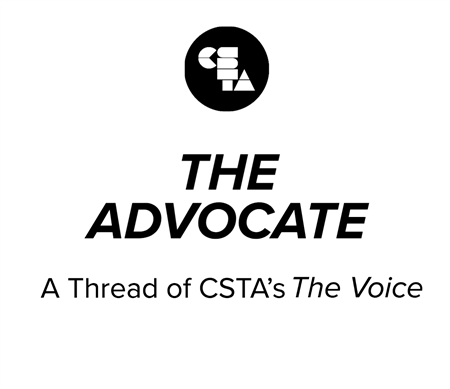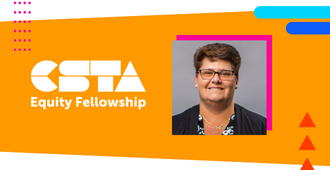
Given that I was scheduled to compose this blog on Nov. 7, 2020 (and am doing so), and that this is the day the U.S. Presidential Election result was declared by the news media, it seems natural to share some thoughts about a few things that the election coverage of the last few days has led me to reflect upon, from the perspective of K-12 (and college) teachers.
Full Story
Given that I was scheduled to compose this blog on Nov. 7, 2020 (and am doing so), and that this is the day the U.S. Presidential Election result was declared by the news media, it seems natural to share some thoughts about a few things that the election coverage of the last few days has led me to reflect upon, from the perspective of K-12 (and college) teachers. They are: 1) the importance of participating in democratic processes; 2) the importance of respecting and trying to understand diverse views; 3) the opportunity that elections present for motivating data science (both computer science and math). These comments are entirely apolitical – in fact, that is part of the point – and while motivated by the US election, they are pertinent to any place that holds open elections.
First, there is nothing like a close election to reinforce to our students how crucial it is that each of them participates – studies the issues, and votes – as soon as they are eligible and for the remainder of their lives. And that for students who are too young to vote, that they are never too young to start following and understanding the process. In every election, there are cases (sometimes very local) where the decision between candidates or on a policy issue comes down to a razor-thin margin. Thus, every election allows educators to reinforce that every eligible voter matters. It doesn’t matter whether we are teaching social studies or computer science – it is good to reinforce this point!
Second, every election has winners, losers, and then the need for both sides to try to come together and govern. But often, in a limited K-12 geographical area, one side dominates. This may make it harder for students to understand that almost always, there is merit to views of both sides, and there are devoted, well-meaning people – both the elected officials and their supporters – on both sides. To the extent that we, as educators, have the opportunity to help our students constructively engage with multiple viewpoints and the people who adhere to them, perhaps we help create a society that functions more constructively in the presence of differences. If we could influence one thing for the future world, this seems high up on the list.
Ok, admittedly, those two points weren’t directly pertinent to teaching computer science, although as educators we always do more than just teach a subject. But this last one is. How many of you, when watching the media reporting incomplete voting results, or comparing results from various elections, have thoughts to yourselves: if only these people understood means, variances, correlations, linear modeling, …? What a great opportunity to grab the attention of our students at almost any level. This particular U.S. election, with its various “flavors” of votes (early mail-in; later mail-in; election day in-person; â¦) that each had their own political demographics and their own sequence in the vote-counting processes, presents particularly nice learning opportunities at any educational level. For example, they can range from explaining the simplest ideas in linear interpolation or extrapolation, to writing complex computer programs that have input parameters about the means and variance of the percentage of people in various voting groups, and the means and variances of the vote outcome for each group, and from these come up with a probabilistic range of outcomes for the election. Great opportunities not only for programming but also for visual display of results. (And the A+ students can become pollsters!) We’re always looking for learning opportunities that will motivate our students and teach meaningful concepts – perhaps this is one.
 Bobby Schnabel
Bobby SchnabelPartner Representative



